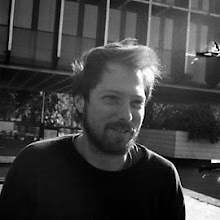Miscellanous
Well... I have been back in Manchester for more than a month now. March came and went relatively uneventfully, except for the week of for my birthday when Misty and I went skiing with some friends of ours in Switzerland. The whole affair was a cathartic experience after months of stress. Being at home has been fantastic after all the coming and going and I am now slowly getting ready to organize my second field season which starts in July, it feels like I have only just got back. I have analyzed most of the data from last years field season and filled my head with new statistical techniques which has been painful but great. I think the effort has been worthwhile and I am currently trying to prepare some of it for submission to a peer-reviewed journal. I am also looking out for a new field assistant. Nathan, who accompanied me on last years adventures is still recovering from his treatment of leishmaniasis and unfortunately won't be coming with me. The treatment is quite hardcore pretty and basically consists of a daily blast of antimonials, which are heavy-metals. He will be missed but I'll post an advert soon, so if you are interested - look out!
Nathan's Leishmaniasis
I have been approaching galleries and the Manchester Museum to see whether they are potentially interested in my project. I went for a portfolio review at the Impressions Gallery with the current exhibiting artist Margareta Kern who is a showing a series of images entitled Clothes for Living and Dying. I am not always a big fan of this portfolio reviews because most of the time people just stare at you blankly, say thank you very much but this is not our cup of tea. Overall the review went well and they were quite encouraging. They were quite interested in the idea of incorporating data into an exhibition and made me think about the kinds of questions that I was asking and how I was going to use photography to answer them. I am not always a big fan of a lot of conceptual art because I find that in many cases the concept gets lost in the delivery of the end product. I believe that if your concept doesn't translate to the viewer then the point of having a fantastic and solid conceptual framework is lost. Transpose this to science: -if you fail to explain your research to others you have failed to contribute to the collective intelligence. The crux of the problem being that many scientists have a hard time and are incapable of explaining complex concepts to the public or to people from other scientific backgrounds. In photography (and medium format photography in particular) this often leads of to a series of beautiful photographs with (as far as my limited understanding of the analysis is concerned) little depth - sadly, the concept of 'style' seems to vanish and many series end up looking very similar. Disclaimer: I could be missing the point entirely, which wouldn't really surprise me. I am a scientist in training, not a successful photographer, or editor or curator - so my opinion is one with no influence and no particular intent. My plan is to develop some of my ideas further and then see where that takes me.
From the series 'Clothes for Living and Dying' by Margareta Kern
When thinking about how to incorporate data into photography I was reminded about a piece on biofuels with some photographs by Rob Clarke that was published in October 2007 in National Geographic. In September 2008 there was another interesting piece on soil by Jim Richardson. I really like both of them because they manage to put a scientific twist on photography in the field. Rob Clarke took some wonderful shoots of crops growing in a field in and isolating an individual plant with a white background. Jim Richardson dug a trench and photographed the soil in such a way that you get the impression that he has actually dissected it. He adds the human element by incorporating the people using the land (and soil) in the photographs (they are perched above the trench).



